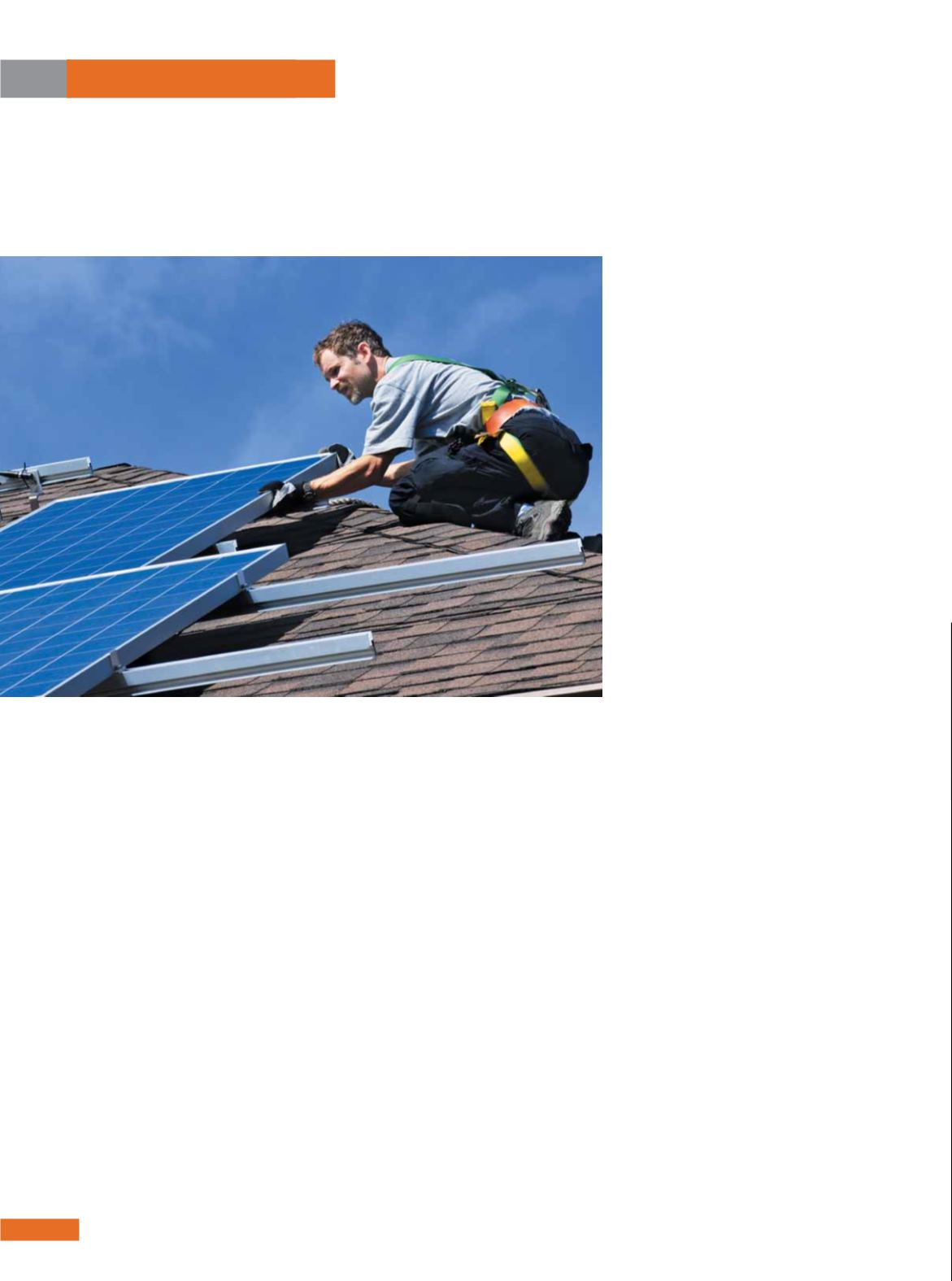

2 8
E L E CT R I C AL CONNE CT I ON
AUTUMN 2 01 5
LET’S GET TECHNICAL
Feed-in feeding frenzy
T
he growth of solar around the
country is seen as a good thing,
helping us towards a ‘greener’ world.
Although small roof-mounted systems
account for about 2% of grid electricity, their
maximum power is about 4% of national
generating capacity.
The bulk of domestic solar is grid
connected and, irrespective of feed-in tariffs,
this is beginning to affect the power quality
of distribution networks.
Increased solar energy generation puts
pressure on the generators’ spinning
reserve (extra capacity available from
connected generators).
As the weather turns cloudy and solar
energy production drops, the generators
must supply the shortfall rapidly and
devoid of network disturbance – that is,
with minimal voltage sags and swells or
frequency variation.
Distribution companies and energy
retailers put some restrictions on commercial
solar installations. Larger installations, of the
order of hundreds of kilowatts, are generally
required to have some battery storage so
that demand is smoothed.
In the case of domestic installations, power
limitations are invoked. Notwithstanding
maximum power limitations, the growth of
small installations can provide aggregate
power likely to cause problems on portions
of a distribution network.
The prevailing method of limiting the
influence of solar on networks is relatively
unsophisticated. There are restrictions on
inverter output voltage – typically 267V on
the high side and 207V on the low side for
single-phase systems – and there are anti-
islanding requirements.
Voltage restriction is in principle a bad
thing for householders who want to reduce
their energy bills. For example, when voltage
rises to the upper limit during periods of
intense sunlight, most inverters disconnect
from the grid and cease operation.
Thus upper voltage limits are a problem
in many urban situations where lots of
solar installations are connected to a local
transformer.
Rather than looking into possible
supply problems and seeking engineering
solutions, supply authorities tend to
dictate the maximum solar power to be
connected and impose strict voltage
excursion limits.
Three-phase installations fall into a
different bracket: they are generally installed
in consultation with a supply authority.
Voltage regulation and power factor
effects are genuine concerns, and we are
in the early stages of these problems. In
addition, federal and state governments are
unlikely to have electrical engineers among
their members.
Moves to reduce the renewable energy
target (RET) can be seen as ‘enlightened’
by generators, transmission and distribution
networks. However, the time has arrived
for a more informed approach to feed-
in problems.
One of the main concerns for power
suppliers is that solar installations basically
do not supply reactive current – that’s a
task for the network. Smart, four-quadrant
metering notwithstanding, there are no
apparent demand tariffs, and imposing
them would be a political hot potato.
It is therefore not surprising that feed-in
tariffs have fallen. It has all become too
hard, and a low reward for installing solar
As ‘distributed generation’
increases, there’s work to be
done on power quality by
electricity suppliers and the solar
industry.
Phil Kreveld
reports.
















